Plymouth figureheads of navy fleet saved from decay
- Published
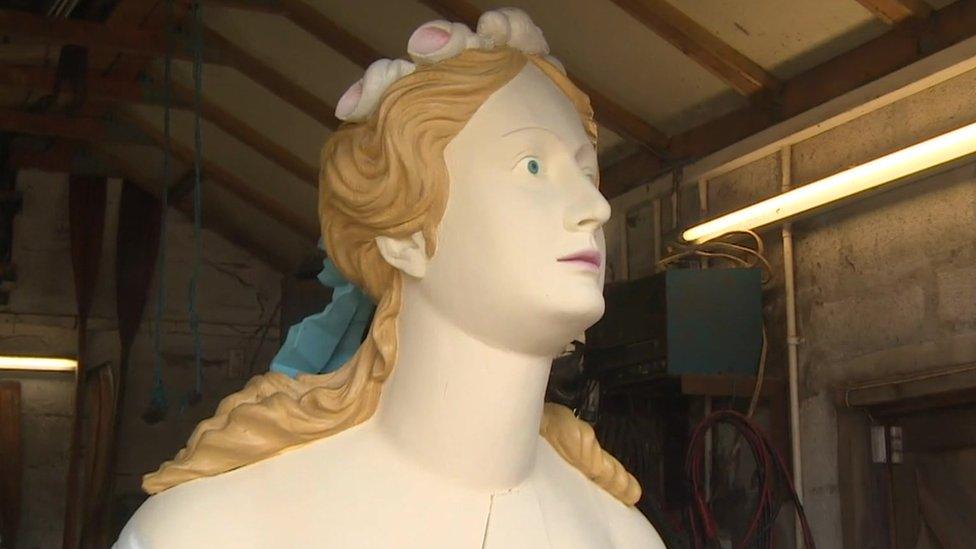
The shell head-dress only appeared on this figurehead after restoration because it had been covered in fibreglass
Fourteen figureheads rescued from the Royal Navy's ships before they were scrapped are to get a new lease of life in a £40m museum and gallery.
The wooden sculptures on the prow of the ships had been falling apart until they were rescued for The Box in Plymouth.
Artists and restorers have scraped away layers of paint, dug out rot and make-shift repairs and repainted them.
They will hang in the entrance of The Box which is due to open next year.
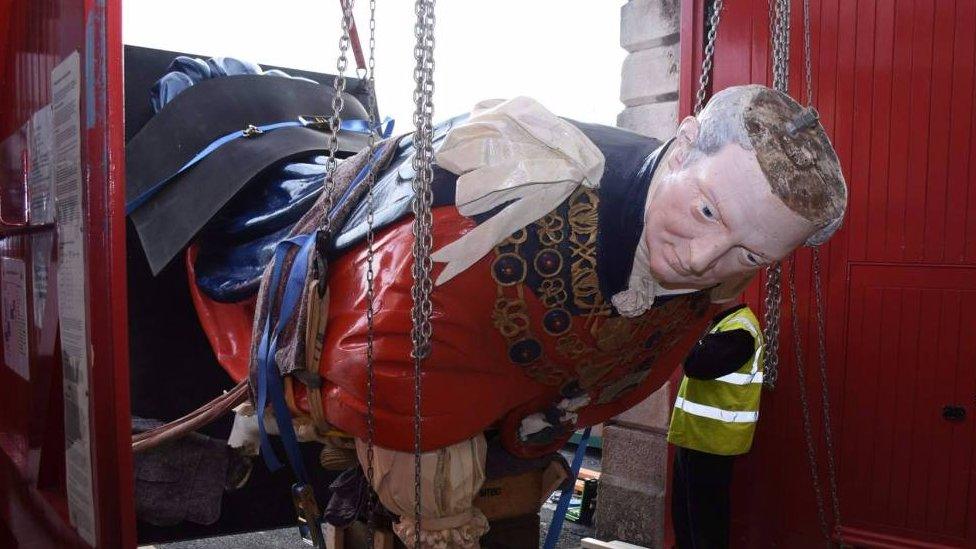
King Billy took all day to be removed to protect his head from hitting the lintel of his former home at Devonport Naval Heritage Centre

King Billy - a figure of William IV from the 1833 warship HMS Royal William - stands proud at the heritage centre before being removed
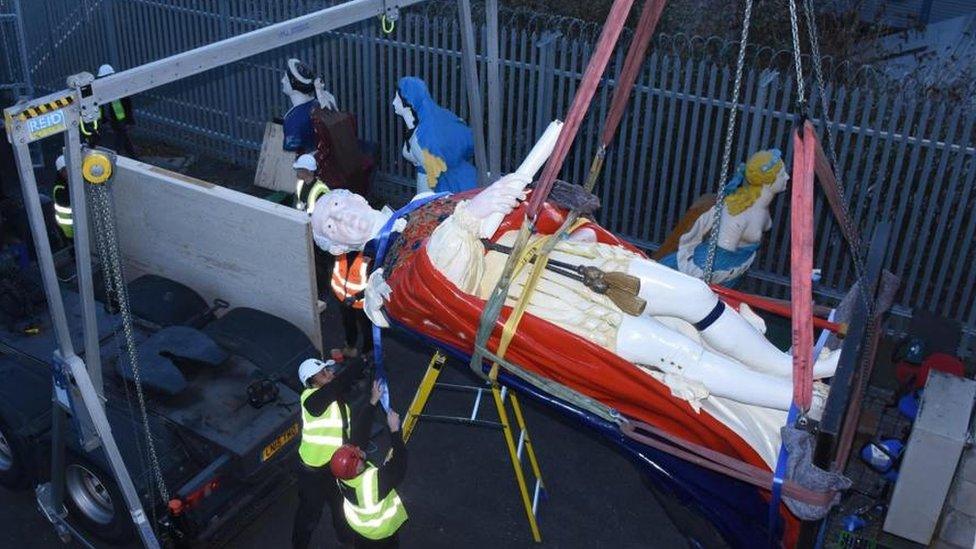
The king will be centre stage at The Box after his unseemly exit from the heritage centre
The figureheads had been housed in the Devonport Naval Heritage Centre before they were removed for restoration in London and Cornwall.
Many were so rotten they were being held together with fibreglass repairs, said restorers.
After the fibreglass and paint was scraped away, their structure was stabilised with resin.
Each figurehead, such as the mythical Basilisk with its lethal-looking stare, has its own character.
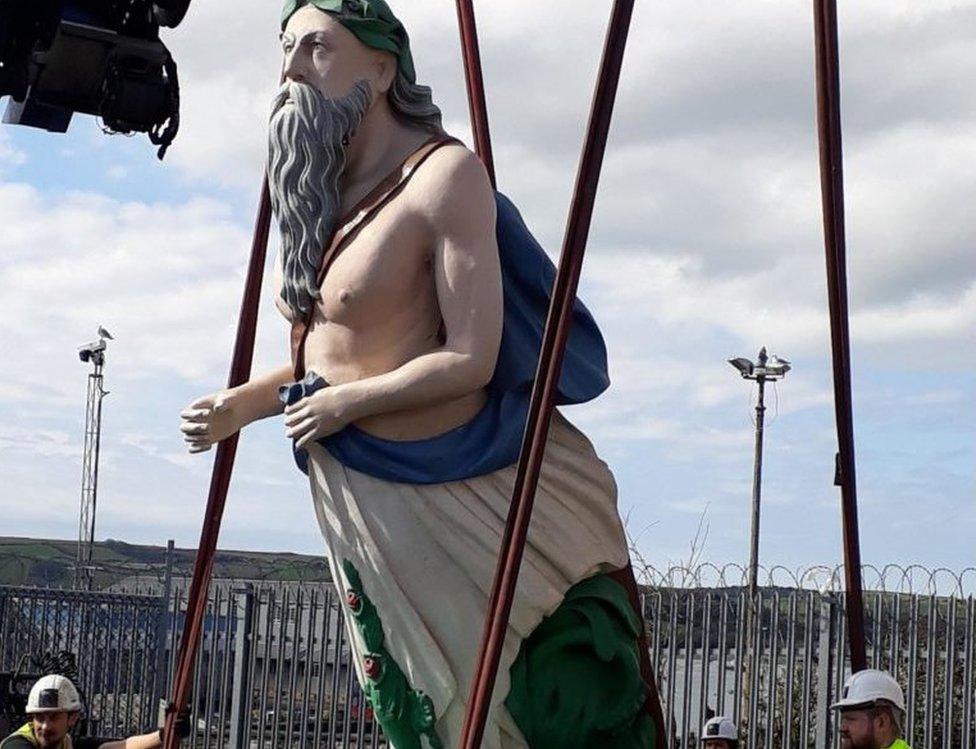
HMS Tamar is a bare-chested river god
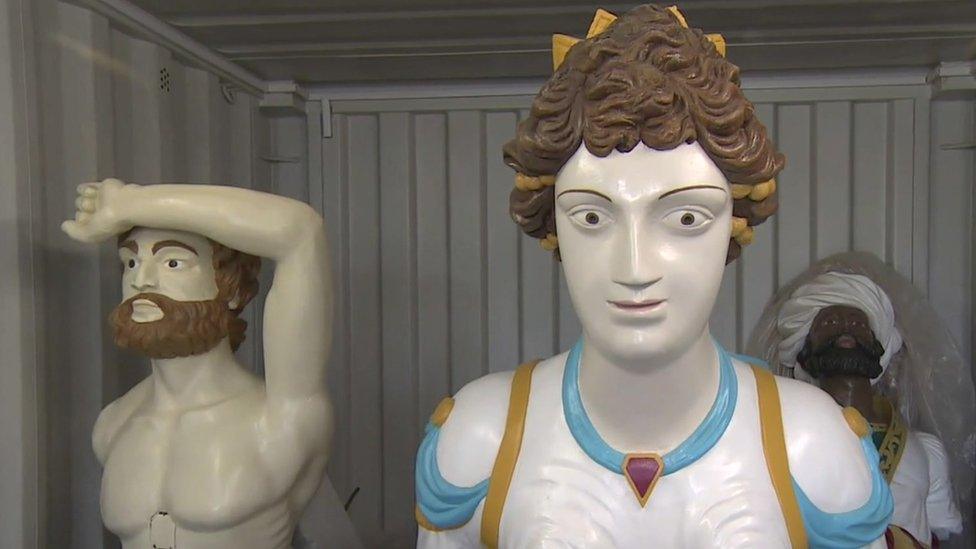
The Basilisk with her lethal stare is ready for the new museum and gallery
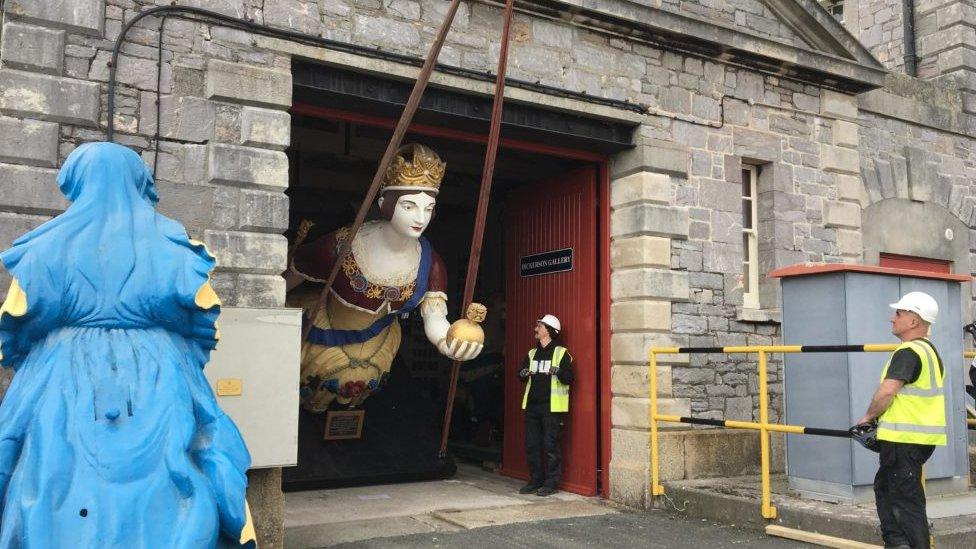
An unregal exit for this former queen of the sea
HMS Tamar is a bare-chested river god and Aurora is a beautiful sea maiden with a head-dress of shells, which was only revealed during the restoration.
King Billy is a standing figure of William IV and was originally the figurehead on the 1833 warship HMS Royal William, which served for many years as guard ship at Devonport.
Removing him from the heritage centre took all day because he had to be carefully manoeuvred horizontally with a fork lift to get his head under the steel door lintel.
He will be standing guard at the entrance to The Box and will be available for selfies.
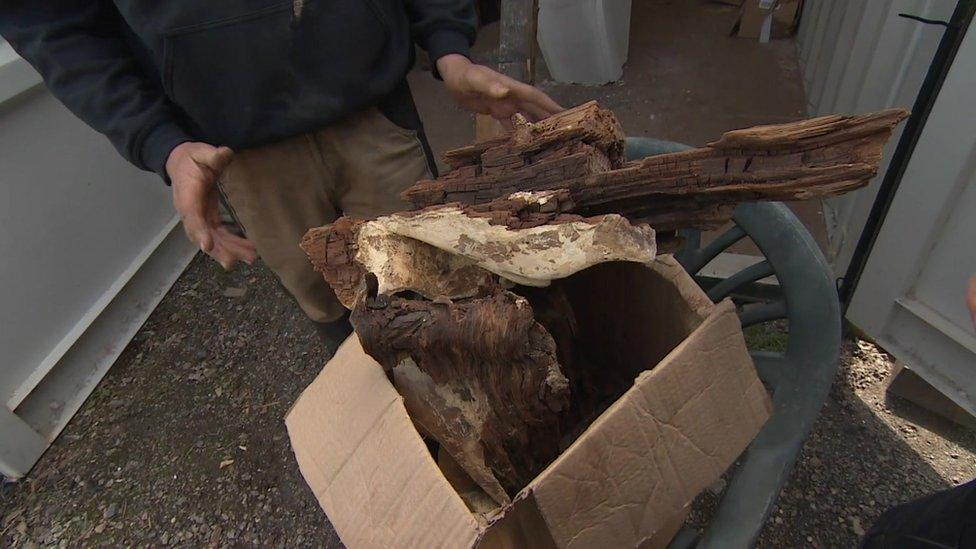
Rotten wood in many of the sculptures threatened their structural integrity
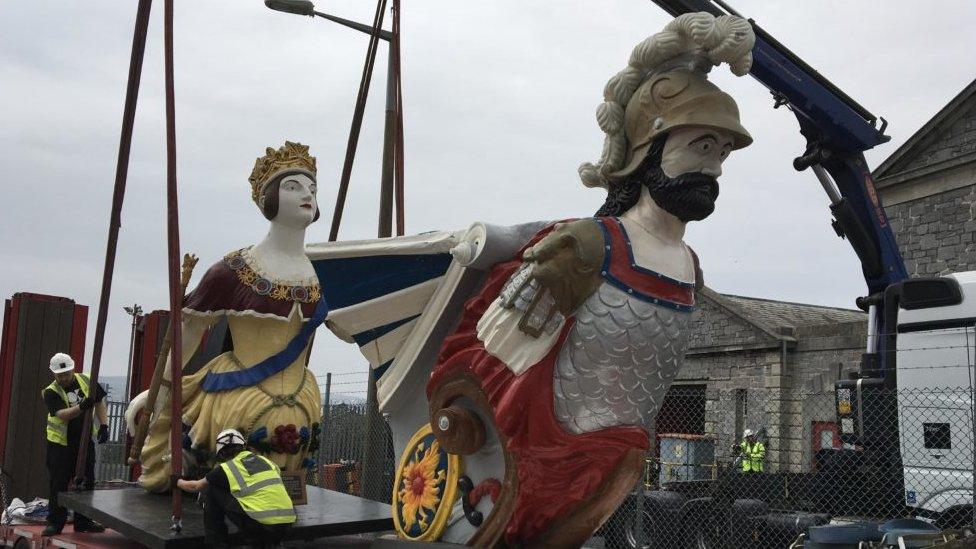
Figureheads head off for restoration from Devonport
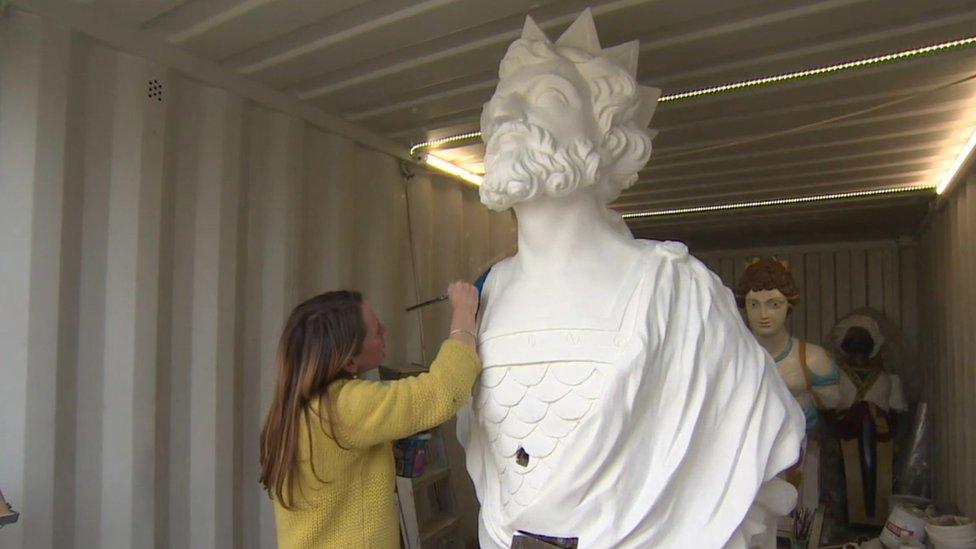
Painting starts on a figurehead ready for the new museum and gallery
The city council called the figureheads "iconic symbols of the history of the city and the Royal Navy".
The Box is due to open as part of the Mayflower celebrations when Plymouth marks 400 years since the Pilgrim Fathers set off for America.
The heritage centre is retaining three figureheads and is hoping to get some more from the National Museum of the Royal Navy in Portsmouth.
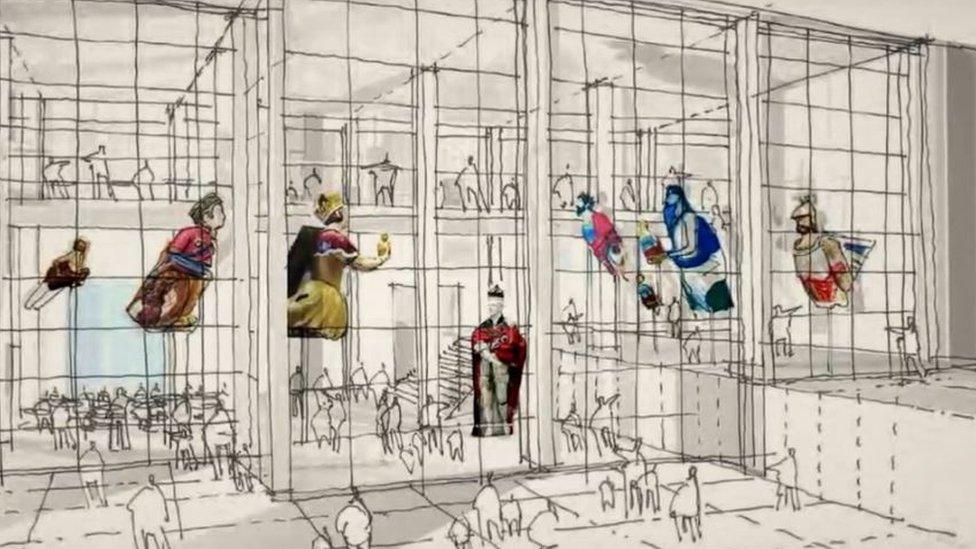
The figureheads will get a new lease of life at the entrance to The Box

The Box is due to open as part of the Mayflower celebrations when Plymouth marks 400 years since the Pilgrim Fathers set off for America